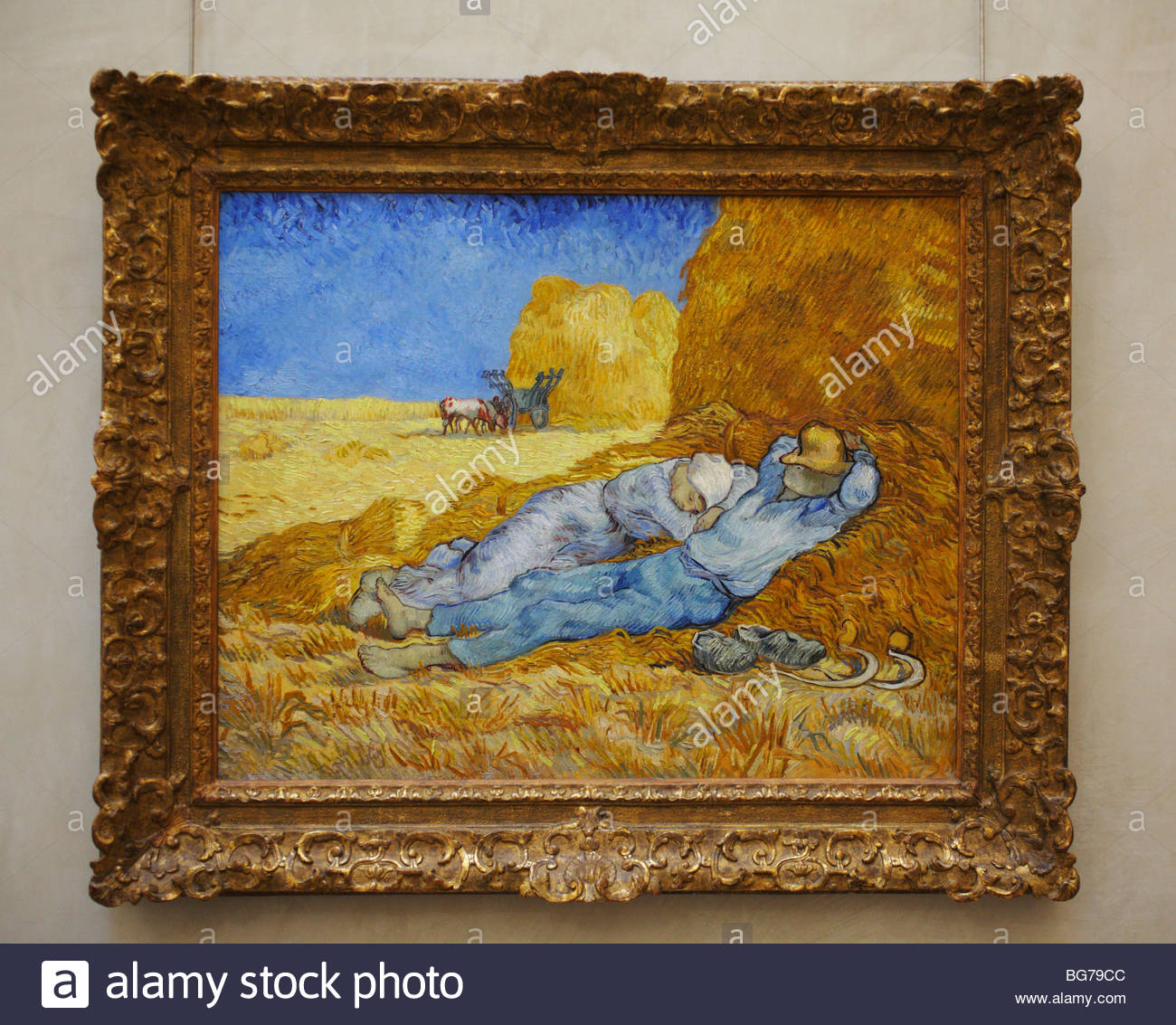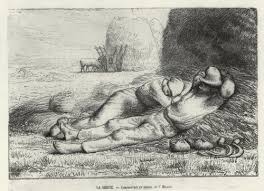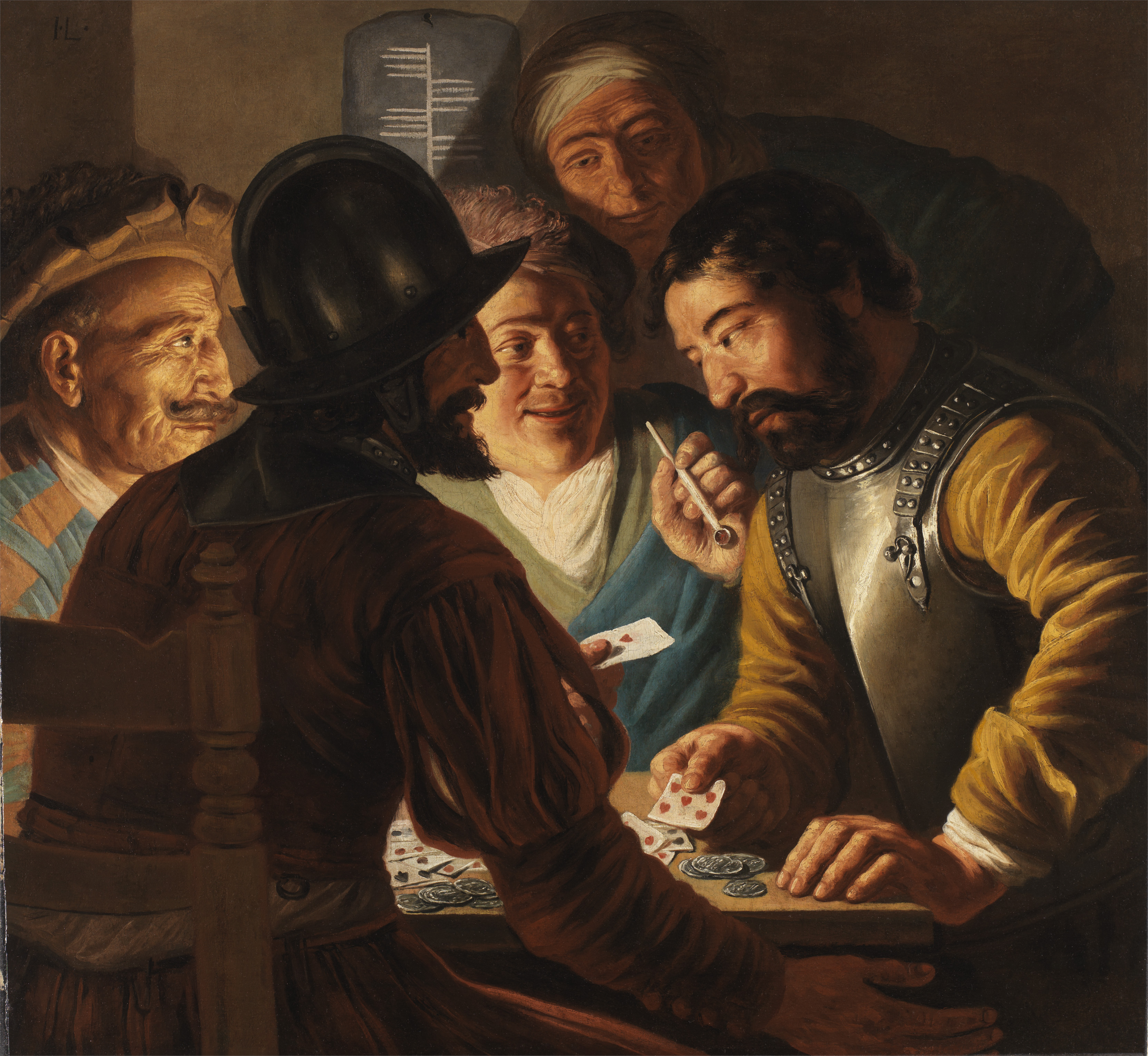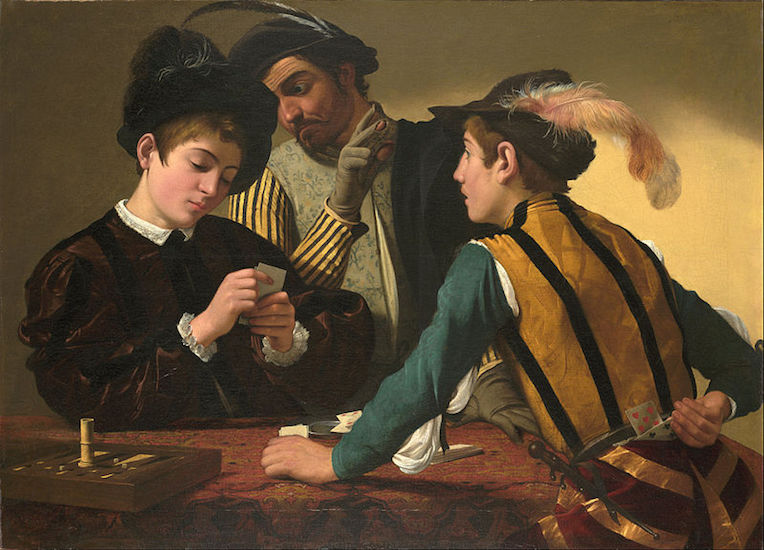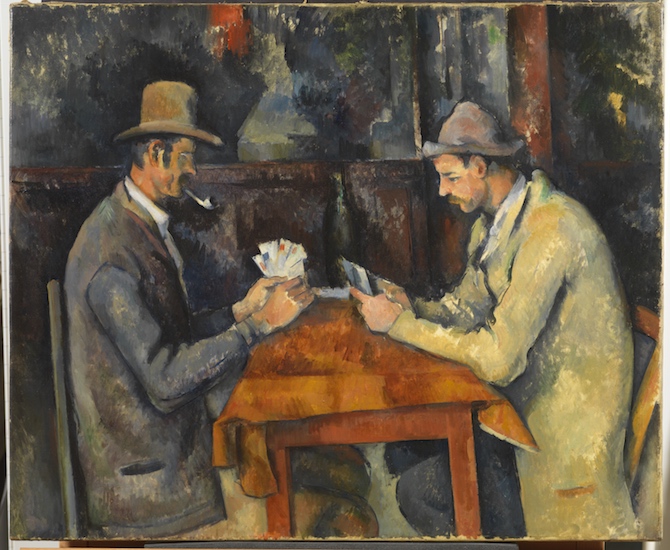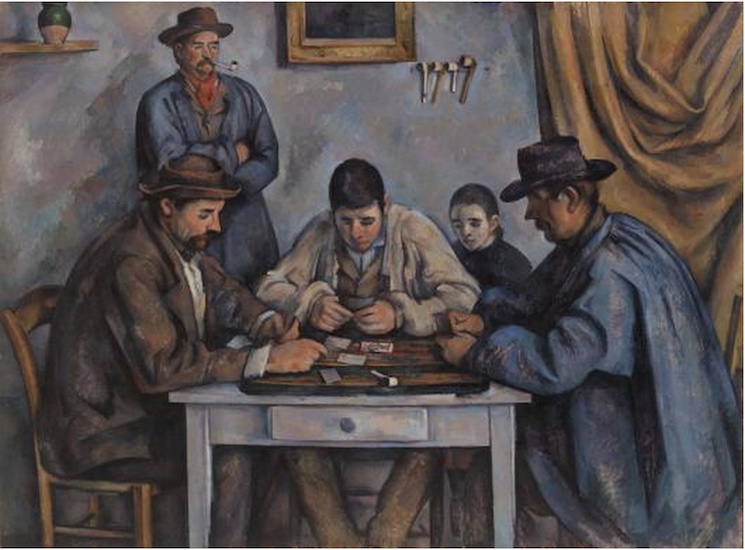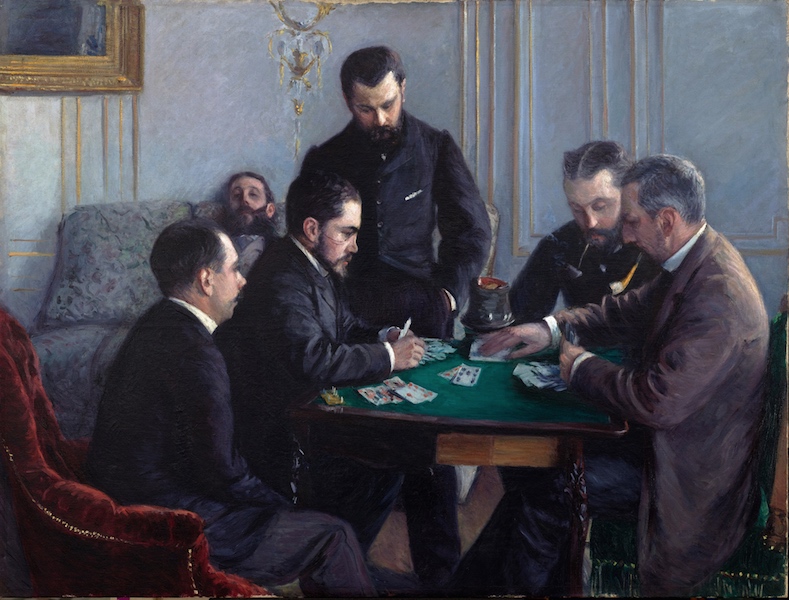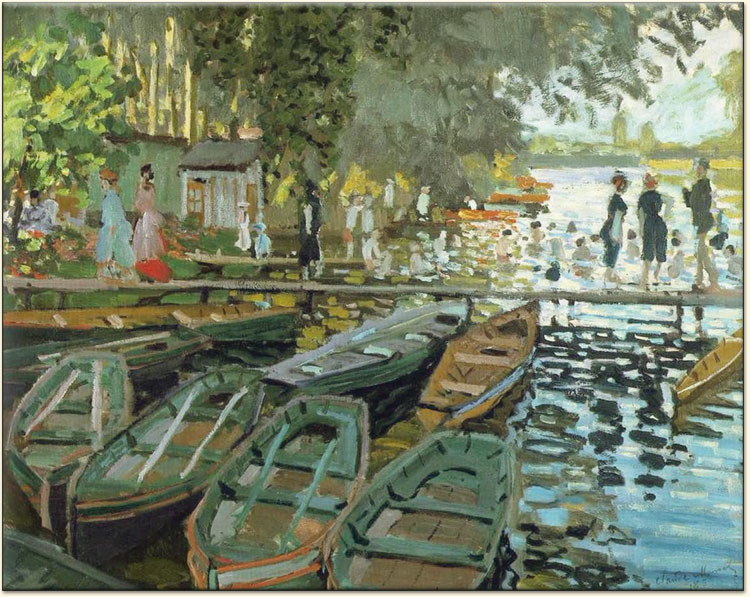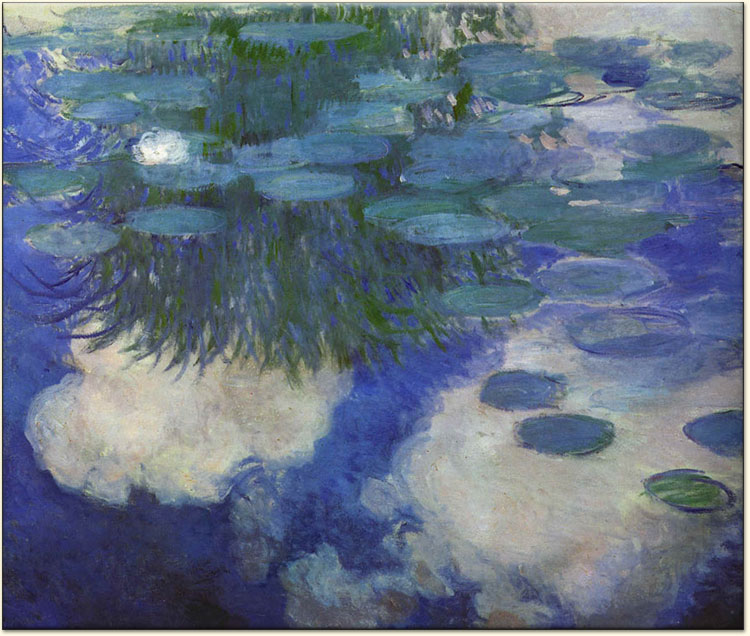My studies is by now challenging me to integrate what I have been learning. After each exercise I had ideas coming and going, which, with the intent to stay concise in my writing, still hung around in my mind and asked for further thought. These writings grew organically out of my learning.
With regards to preparation for my assignment, I will also use this page to research the background of each work from which I need to make one choice, as my tutor suggested.
Thoughts after accounting the similarities and differences in the work VAN GOGH copied after MILLET (the sower)
Contemplating what I have learnt so far: Ideas are made up of multiplicities, combinations of representations – the results are random, contingent . I think of Van Gog making copies which preceded his need to using his ideas, which is lines and colour, to copy after Millet and how this changed his skill, contributed to developing his painting style and the different outcomes of several/ repetitive works on the same subject. So Millet’s work created possibility for Van Gogh! What a difference we see happening.
Copying is a part of learning – practically it would mean: do not as I say —Do as I do! Millet was a master in van Gogh’s eyes and he learned from him through a process of repetitive copying. His learning developed his own practice, grew his own language and style. He also related on a personal level to the meaning behind the works, which in turn helped him in his own understanding of the meaning of life/reality.
The idea of finding differences
I think that in looking at the differences between the two works, appearance or resemblance and meaning makes more sense – Van Gogh was not trying to find likeness in the work, although he learned from Millet – this learning by repetition of the same work, is a big part what lead to his own freedom of ideas to develop his style of painting and which can also be seen in Modernism and Deconstruction. I think Van Gogh found a ‘newness’ and more possibilities of Millet’s work in his own ‘copies’. Van Gogh’s painting “La Sieste” (1889-90) is a mirror image of Millet’s pastel “La Miridienne” (1866), a peasant couple sleeping in a haystack, with all the elements in place–wooden clogs, oxcart and oxen in the distance–Van Gogh flipped left to right and with Millet’s soft shades of pale yellow, gold and blue heightened to Van Gogh’s high-noon heat of chrome, canary and ultramarine.
Whilst I was making a list for this exercise, it was a mind game – looking, generalizing and repeating a process to find differences and resemblances – colour, shape, mood, light etc. I think I being to understand that in the process of difference in itself one is learning what can be created – almost of this is the zone where van Gogh was when he was making these copies of Millet’s work. It made me aware of other art works where this same creative process was followed. I recently visited the Louvre in Abu Dhabi and can think of works where I could see this emphasis on difference. Card players: Jan Lievens, as Dutch master during 1607-1674 and the work of Gustave Caillebotte. I immediately looked the card players series of Paul Cezanne and the work of Caravaggio to compare and found more difference.
In an online video presentation of a lecture on Deleuze and Difference and Repetition, prof Todd May – called the Impressionist Movement a REACTION to ART. They created an art not to be in opposition to art – they were investigating intuitively and were bouncing ideas of each other, questioning that was to be the only/best practice – it started new learning, despite the negative reaction to it. The challenge Deleuze provides is that how is it possible to think of creation as active, and not a matter of re-active.
Thinking about what happened here is my historical perspective: Impressionists reacted to the system of state-controlled academies and salons and formed their own independent exhibitions. They painted contemporary landscapes and scenes of modern life, especially of bourgeois leisure and recreation, instead of drawing on past art or historical and mythological narrative for their inspiration. Interested in capturing transitory moments, the Impressionists paid attention to the fleeting effect of light and colour. They worked mostly outside in Plein Air, and at different times of day/ seasons, also on the same scenes – their creative plane was that vision works through the painting of light.
It is here I think where it gets interesting – they followed their own path and out of this grew the Post Impressionists. They were going deeper with regards to appearances by exploring their own perception. By doing so they continued the break what the Realists began from the illusionist tradition by emphasizing the paint on the surface of the canvas, flattening the sense of perspective through a lack of tonal modeling ( brushstrokes would be directional and not very much ‘order’) – and using daring cropped perspectives which were influenced by Japanese prints. It offered new ways of seeing the world, generated different perspectives about more to do, more to be created. To me it affirms that the creations that took place was fruitful, as it lead to other creations – art movement and development. It challenged the artist to look within himself to actualize and unfold so many new possibilities.
What I also found interesting was a comment of Sherrie Levine about hanging her work together with the works she appropriates. According to her it then reduces the difference to sameness. Deleuze asks us to see a space between, as that is what difference constitutes – it belongs to neither of the works.
Great examples would be the work of Monet, if I had to choose one artist.
With regards to the first image: Bathers at La Grenouillère, Claude Monet, 1869. During the summer of 1869, Monet worked with Renoir at this cafe and bathing place on an island in the Seine. He worked with great rapidity to capture the effects of rippling water and sunlight. The light shining on the river and paler color in the distance lead the eye into the landscape, yet the patterned brushwork in the foreground emphasizes the surface of the canvas.
Monet’s water lilies : In especially his later works, he draws the eye back to the surface of the painting, often through brushwork and independent of form. Artists remind the viewer that they are looking, above all, at a painting; at the artist’s personal vision of an aspect of the real world.
Research on the subject Van Gogh referencing Millet with regards to The Sower.
Millet, when he created and presented this painting to the French Saloon in 1850 was clear of his social awareness which was influenced by the Industrial Revolution, human exploitation and social class differences in society, influenced his painting subject and style. His painting was done two years after socio political revolt against the French monarchy, which ended in failure for the peasantry. Apparently the American poet, Walt Whitman, praised its sublime murkiness and original pent fury, and saw in it the prototype of Creative Man, sowing the seeds of a new age. I can almost imagine the contrast of the viewer in Paris, dressed smartly, looking at this work in shock and amazement. This was a commissioned work for a collector in Boston and is currently displayed at the Museum of Fine Arts, Boston. I read that Van Gogh, like many artists and writers by the end of the nineteenth century, were disappointed with the indifference and rejection of the bourgeoisie and were troubled by the constantly widening gap between artists and society. Van Gogh was also struggling with his own identity as an artist and his need to create his visual experience
BACKGROUND RESEARCH for ASSIGNMENT FOUR:
- Fred Wilson, Mining the Museum ( 1992-1993) The piece of the work shown in the study guide is called Metalwork 1793 -1880 and part of a strong exhibition project/installation about how the artist extracted and unearthed objects from the Maryland Historical Society’s collection and by reshuffling them in his installation, address the biases museums have toward ‘prominent white men’ . By viewing this work the viewer is confronted with how racism is an integral part of the history and how bias is entrenched in worldview of how we display/tell history. I can see Deleuze’s ” nomad nomos’ at work with the word ‘mining’, and it would surely be an interesting subject to discuss difference is this work. I see irony and satire in the idea of re-arranging as showing out bias. In the shown image, the slave shackles juxtaposed between the grand silver pitchers and artefacts is a very uneasy space to be viewing from a gallery viewer’s perspective. I think that many a time, when an I feel strong about a situation and use art to critique/react to this,( making the invisible visible) I found great learning (my own creative learning) to contextualise this – here is a work using satire and suggestion rather than being didactic and moralistic.
- Mark Tansey, Action Painting 1981 – in this image one sees an artistic moment – also on the artist’s easel. of capturing a car crash. However my first reaction is the painting within the painting of an artist using her ‘measuring stick’ – ridiculous and impossible in such an action loaded moment! It seems this can be difference – as if in a didactic situation you are shown how to represent motion, or a moment of time, something which Deleuze reminds us in ongoing and the moment of creation/creativity, and the norm, which would be single point perspective – here we will see difference become primary, as in apart from the normal framework. I also wonder about the reference to Action Painting and Pollock – here the artist uses himself to create action, not a representation of action/a moment/time. “At a certain moment the canvas began to appear to one American painter after another as an arena in which to act – rather than as a space in which to reproduce, re-design, analyse or ‘express’ an object, actual or imagined. What was to go on the canvas was not a picture, but an event”. Harold Rosenberg, The American Action-Painters, 1952I also viewed his Action Painting 11, 1984.
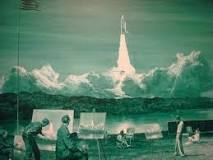
- Michael Asher, Claire Copley Gallery is a piece of installation art. Here the artist juxtaposed the art space, in this case the exhibition space, with that of the business space. The gallery owner is ‘exposed’ (the viewer see the owner doing her daily work) , the owner is part of the art market/ art consumption – and the artist is deconstructing this difference between the seller and the manufacturer.
- Sherrie Levine, After Walker Evans, 1981 challenges original and copy through appropriation in this exhibition series. Walker Evans, a famous American photographer, shot photos during the Depression years on commission of the FSA. Levine copied her exhibition photos from a book, in which Evans published these photos years after the commission. Danto commented to the philosophical problem of the ‘relation of art and reality’ and indicated that the work of Warhol, Cindy Sherman and Sherrie Levine having engaged in questioning this. I am intrigued by the tension between appearances and truth that came to the front with this process of artmaking. The work is now shaped by a field of difference to refer Deleuze.
- Cornelis Ghisbrechts, Studio Wall and Vanitas Still Life , 1688 – this is Tromp l’oeil style painting, a subgenre of Still Life painting, and done to ‘deceive the eye’. All ready I think of Deleuze referring to Aristotelian way of showing difference by categorizing into species – art is here also divided into more categories – the rules of Still Life painting is followed firstly then we have a new meaning, under this, Tromp l’oeil that play with reality, by convincing the viewer with the technique that the thing you see is real, not a Still Life painting, but a painting of the Vanitas Still Life genre is hanging on a wooden wall. We also see art as being used to amuse and deceive. It is a painting of an artist studio with a painting hanging on the wall. I love the right hand corner where a piece of the ‘canvas’ is coming off the ‘frame’.
- Art&Language, Portrait of V.I.Lenin with Cap in the style of Jackson Pollock,1980. Interesting to read about the collective name for a group of artists being Art&Language, and that this work is part of a series of 7 images where images of Lenin were covered with thick layers of paint, highly reminiscent of the work of Action Painter, Pollock. The idea was to make photocopies, cut up and the reassembled into new formations. An essay which explored realism and representation as well as a song were released by the same group of artists. Clearly the politics of the Cold War is ‘hidden’ in this work. The work is ironically different to the art work of Russia at that time – style of socialist realism, which was an official state policy and did not allow for abstract work.
Understanding and finding difference in above works – the study guide refers to “Such works will generally have a double aspect like the ‘duck-rabbit and other picture puzzles though this won’t always be visual, it may be conceptual. Allegories and simulacra are also suggestive of difference” What a challenging and exciting process to research.
A few days ago I came upon an interesting article on Fakes and Originals by philosopher Alain de Botton whom I have been reading. ( website The School of Life, Chapter 6. Leisure: Art/Architecture)
ON FAKES AND ORIGINALS
I found the idea that we should be more open to display copies in our homes and public galleries interesting with regards to Modernism and the concept of Difference in contemporary theory. The author points to an “obsession with original prototype”, and says that our culture has spent a lot of time thinking about what can go wrong around copies, but that “we have missed potential benefits and advantages of copying works of art, because we have ‘uncritically’ absorbed the idea that copies are worthless and kitsch.” He refers to the use of postcards – if we were honest we could admit that this postcard moves us later, and not when you were in front of the original. (very much in line with Susan Sontag in her book, On Photography- at least the reading is starting to sink in) Yes we do get good and bad copies. He refers to the therapeutic power of artworks – if it hung in our homes, the message can be more effective – as being there when we need them. Another interesting view is that copies give a solution to rarity – it “increases the supply of good things; it brings down the price; it makes them more widely available. It makes one think about rarity – as this yields status, but for a few rich people – does not offer anything to society as a whole, he states! He says the art world tends to stress rarity and uniqueness as very desirable – but should ideally not be that the best things would be in plentiful supply? (This lead to my own thought about the power of money – it is all about market demand – scarcity is a feeling only the poor knows. The rich need the ‘high end’ to show off and keep the division of haves’ and have nots. Art as a commodity still bugs me as so much of this is manipulated by the rich and powerful)
The author gives examples of copies in the architectural world and links it to a basic lesson from the Renaissance – “copy what you really admire and adapt the rest to suit your needs”. Apparently Shakespeare had a similar attitude towards traditional stories – adapted and changing in order that his audience could understood. the author calls this the ‘classical attitude to culture’ and state that this is our to refine, adapt and improve, and that is is not just about preserving the past, is is also about adapting things for the present. – He makes the example of the Mona Liza – change what you need in the scene ( colour, background) – made in the Chinese painting factory, and people get upset…. but why. He then reflect about negativeness towards this idea and if we are sure what we really want from art. He says the point of art is ‘ to help us live our lives more wisely and with greater poise’ and that if we ‘ recognise that art has a purpose – a great and useful purpose – we can get less bothered about the difference between the original and a copy”.
Why did this stimulate my thoughts?
I see an active way of reasoning –
Following the line of seeing, without knowing the outcome, challenging a dogmatic image of what art is. In this frame of mind, as Deleuze will put it, you are privileging or excluding. It is also assuming or presupposing a ‘logic of identity’ and the idea that dominate will be presented and the other idea will be excluded. It forced me to think about what would happen if I think differently about the purpose of art and a human need to benefit from it. By investigating this, I found there is more than what I think – it is outside the current ideas of culture. The identities of things, ideas, constructs, concepts, come and go. That what is possible is that what is real – art can realise the possible, because the ability to create always comes back – Deleuze calls this the virtual in its creative power.
THOUGHTS ON APPROPRIATION
The idea that original in a culture has more value has been challenged and is being transformed. Artist Jeff Koons makes more than one work – a series of the same. Platonic traditions privileges ‘the same’ To be original is a form of style you present – something never seen before, a novelty, a flame of pure genius is not realistic, but society still place on these unrealistic ideals? It seems to be a myth vested in one person and also more a Western cultural idea. In Asian Culture the master/student relationship is what learning is about. The ability of the student is built upon the reproduction which is so close to the masters work, that one could almost not tell the difference – the artist is never an autonomous subject in this scenario. Modernism treats truths as absolutes and post modernism appreciates multiplicity. In After the End of Art, Danto talked about the Age of Manifestos – Modernism
It would have been interesting to look at difference between the work of Koons and Levine – I plan to add this to my blog
(have some reading material ready for research —
Levine and Koons: Koons’s appropriation of the work of others offers an interesting point of contrast to Levine’s “Pictures” work- The Pictures artist have been involved in questioning their own position as producers of art in relation to the mythic baggage of subjectivity and individuality, of which they have become acutely self-conscious. There has been a shift in the activities of the new group of artist in that there is a renewed interest in locating one’s desire, by which I mean one’s own taking pleasure in objects and commodities, which includes what we call works of art. There is a stronger sense of being complicit with the production of desire, what we traditionally call beautiful seductive objects, then being positioned somewhere outside of it. In this sense the idea of criticality in art is also changing.
Both Levine and Koons discuss the way the art world uses the art/industry
dichotomy. They both recognise the segregation of “art” from the masses.
However Levine’s ideal viewer is within the sphere of art, in an attempt to
implode Modernism’s construction of the “art” community. Koons’s purported
audience is broader than this- Jeff Koons: For me, the issue of being able to capture a general audience and also have theart stay on the highest orders is of great interest. I think anyone can come to my work from the general culture
Value has a lot to do with judgment and less to do with enjoyment by looking at or experiencing something. It is also structured by the way we think – Philosophy of Deleuze is challenging representation and judgement through difference. It is like a surfer in the waves – we are immersed in this (reality) waves, we have to ride them. Creativity is the result of tension between conscious reality (the wave) and unconscious drives (hidden energy) Deleuze refers to ”’Ideas must be called ‘differentials’ of thought, of the ‘Unconscious’ of pure thoughts. – a fractured I or a dissolved Cogit
I was challenged in: How does things appear to me? Am I just looking at the surface (appearance) and not seeing the full potential (behind) ? Moving away from that what everybody knows —-how do we think this ‘beyondness’? It is easy to go back to identies. Have to continuously explore – the conditions of possibility of experience – transcendental empiricism / idealism
Ideas about reality from Deleuze;
Rather than viewing reality as a set of actual structures which have their possibilities, – see reality as:
- a set of actualities that have woven in it, a virtual field
- what we see are several identities, but those identities can emerge in different identities
- actualization
